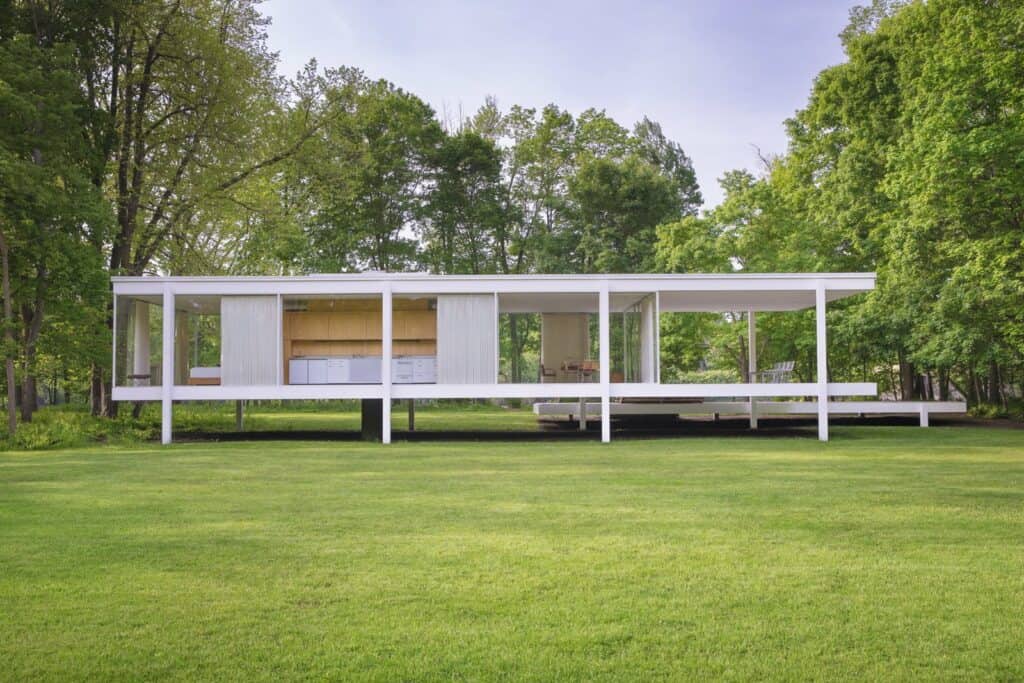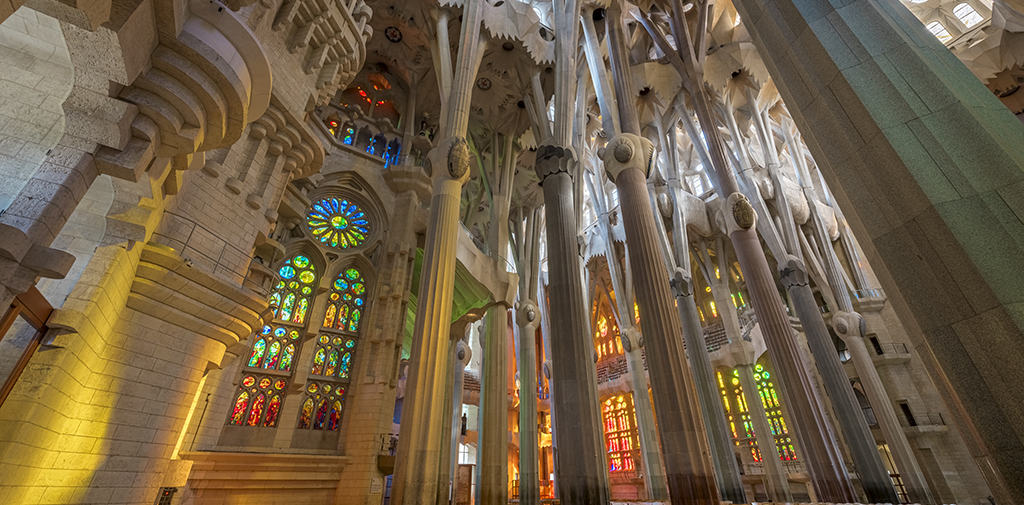Articles & Features
Spot the Difference: Modernism vs. Modernisme
By Tori Campbell
Modernism and Modernisme in architecture are two different movements characterised not only by a variance in spelling, but also style, form, and philosophy. Though historians are divided on how one may have influenced the other, we take a deep dive into the history and characteristics of these two architectural movements, illustrating through stunning examples how modernism and modernisme architecture can be defined and differentiated between one another.
Modernism
Modernist architecture is rooted within the philosophical and artistic movement of modernism that came into prominence in the late 19th, early 20th centuries in Western society. Reflecting a desire for new forms of art, culture, and social order, Modernism could be seen as a response to the rapidly industrialising and urbanising world.

Informed by the new construction materials and engineering breakthroughs of the era, modernist architecture emerged in the early 20th century and reached its zenith in Europe and America post-World War II, before being ultimately replaced by postmodern architecture in the 1980s. With a desire to break away from historical styles, modernism aimed to invent something new with a pure function and a stress on rationality. Characterised by plate glass, reinforced concrete, and cast iron, the style aimed to reduce ornamentation.

Modernist architecture can be best thought of as an umbrella term, enveloping innumerable architectural movements within it; including International Style, Bauhaus and the German Werkbund, Expressionist, American Modernism, and Constructivist architecture. Despite the variation found within the style, the work of a select few architects, namely Le Corbusier, Ludwig Mies van der Rohe, Ray and Charles Eames, and Walter Gropius, most readily come to mind when Modernism in architecture is discussed.

Le Corbusier’s work was defined by functionalism and his bold, sculptural expressionism. Though he is the mind behind innumerable works, some of his best known include Villa La Roche, Villa Savoye, Immeuble Clarté, and Unité d’Habitation. His contemporary Ludwig Mies van der Rohe, made a splash with his minimal and striking Barcelona Pavilion and was also lauded for his Seagram Building and Farnsworth House, among others. Lastly, Walter Gropius, the founder and architect of the renowned Bauhaus and its sites in Weimar, Dessau and Bernau.
Modernisme
One matter that architectural critics and historians are largely divided on is whether or not the Art Nouveau and Art Deco styles should be considered the first examples of Modernism, or if they are separate movements that preceded Modernism. This distinction becomes particularly important when we consider Modernisme and its positioning within architectural history and chronology.

Modernisme, or Catalan Modernism, is in fact directly linked to Art Nouveau, an architectural style popular between 1890 and 1910 as a response to 19th century historicism. As a predecessor to Modernism (or as the beginning of it), Art Nouveau was interested in moving away from the styles and philosophies of the past but, unlike Modernism, was characterised by ornamentation and sinuous curving forms. Inspired by natural forms, the style incorporated flowery and leafy forms, often utilising the decorative arts to complement the architecture. Art Nouveau was born in Brussels but could soon be seen around Europe and the United States, and took on different names and characteristics in different locations: ‘Jugendstil’ in Germany and the Nordics, ‘Stile Liberty’ in Italy, ‘Secession’ in Austria–Hungary, ‘Arte Nova’ in Portugal, ‘Nieuwe Kunst’ in the Netherlands, ‘Modern Style’ and ‘Glasgow School’ in Britain, and of course, ‘Modernisme’ in Catalonia.

Modernisme took on its own unique flavour from other forms of Art Nouveau and has since garnered attention and acclaim for its innovation and beauty. A result of the search for a new Catalan culture focused on the revindication of the Catalan identity, Modernisme was thus centred in Barcelona but soon spread throughout the world. Though many Modernisme architects would be worth mentioning, the most popular and iconic names are the genius of Antoni Gaudí, Lluís Domènech i Montaner and Josep Puig i Cadafalch.

Informed by Moorish architecture and form, Modernisme incorporates nature and geometry to result in stunning and improbable forms. Often curving and complemented by straight lines, the buildings are ornamented with towers, arches, and natural sculptings. One of the fathers of Modernisme, Antoni Gaudí, was known for his ruled geometric forms such as the hyperbolic paraboloid, the hyperboloid, the helicoid and the cone, reflecting organic structures found in nature. His most famous work, the Sagrada Família, a Roman Catholic church in Barcelona has controversially been under construction for over 100 years due to the size and complexity of its engineering. Gaudí is also the mind behind Palau and Park Güell, Casa Batlló, Casa Calvet, and Casa Botines, among others., while his contemporary, Lluís Domènech i Montaner, is best known for the wonders that are the Hospital de Sant Pau and Palau de la Música Catalana, both of which are now UNESCO World Heritage Sites. Lastly, Josep Puig i Cadafalch crafted many buildings, among which are the Casa Martí, Casa Amatller, Casa Serra, and Fàbrica Casaramona.

Modernism vs. Modernisme
Though the close spellings of ‘Modernism’ and ‘Modernisme’ could be confusing, it is clear that both the two architectural movements have unique characteristics borne from a shared history. Without Modernisme and its Art Nouveau counterparts, Modernism as we know it simply would not exist. Modernisme’s departure from historical references and the employment of new construction materials set the stage for the lack of ornamentation and reinforced concrete that we associate with Modernism. Unique to Catalonia but with aesthetics shared around Europe and the United States, Modernisme architects used their imagination to craft iconic buildings and monumental structures that fans continue to flock to from the world over.
Relevant sources to learn more
Art Movement: Art Nouveau
Art Movement Constructivism
Innovative Architecture: Ten Buildings that Redefine Sustainability
Brutalist Architecture: The Defining Style of the 20th Century?
Casa Batlló
